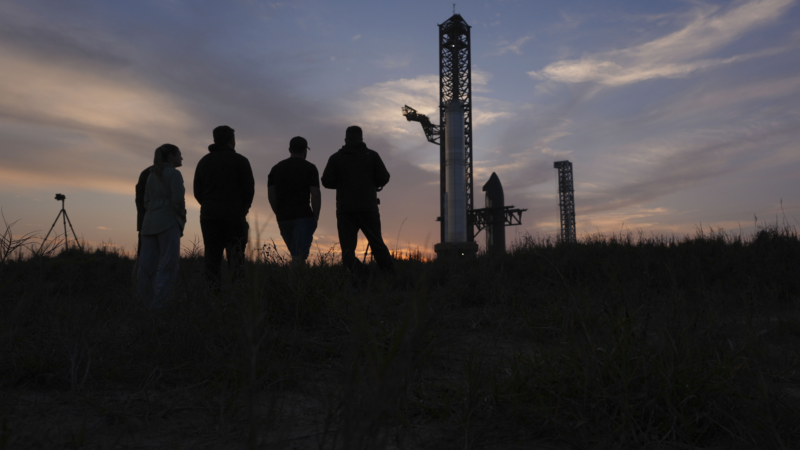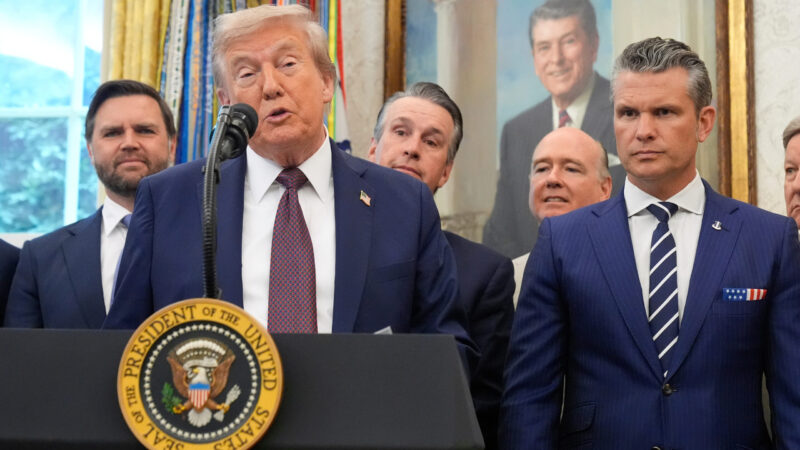Elon Musk’s Starship rocket prepares to fly again
A little over a month after a catastrophic failure peppered the Caribbean with falling debris, Elon Musk’s company SpaceX is readying another flight test of the largest rocket ever built.
Known as Starship, the rocket stands just over four hundred feet tall. It’s made of stainless steel and is designed to one day be fully and rapidly reusable – meaning that both the rocket and its Super Heavy booster could be launched again just hours after returning from space.
Such a vehicle would radically lower the cost of launching satellites and people into orbit. In the near term, SpaceX plans to use Starship to greatly expand its fleet of Starlink internet satellites. NASA has also paid the company billions to develop Starship into a lunar lander for its upcoming Artemis missions to the moon.
But the ultimate goal of Starship is to get humans to Mars. Elon Musk founded SpaceX with the dream of making life multiplanetary, a dream he reiterated in a discussion on The Joe Rogan Experience on February 28.
“We’re at this point in time, where, for the first time in the four-and-a-half-billion-year history of Earth, it is possible to extend consciousness beyond our home planet,” Musk said. “That window may be open for a long time, or it may be open for a short time.”
Musk said that he hoped one or more uncrewed Starships to the red planet could launch as soon as November of 2026, when Earth and Mars are in close alignment.
“We’re going to try to go as fast as possible,” he told Rogan.
Speed is central to Starship’s development process, says Tim Farrar, president of TMF associates, which tracks the commercial space business. SpaceX likes to “move fast and break things,” Farrar says. “You can get a lot done if you’re prepared to take a lot of risk,” he says.
The fast-but-risky strategy was on display after the last launch on January 16. As it headed towards the edge of space, Starship suddenly caught fire and exploded. Vacationers in Turks and Caicos caught the flaming debris on video as it streaked across the sky. The falling debris also forced the Federal Aviation Administration (FAA) to suddenly close a vast tract of airspace along the rocket’s flight path. More than a dozen commercial flights were diverted as a result of the closure.
In a statement last week, SpaceX said that the fire began in an unpressurized section at the back of the rocket. SpaceX said it believed the fire was caused by a fuel leak, which in turn was created by a strong vibration in the body of the rocket. The company says it has made modifications to both hardware and its operating procedures to prevent a similar failure going forward. The FAA said in a statement that it was allowing the latest flight test to proceed, even as its investigation into the mishap remains open.
The flight test also comes at a time when several current SpaceX employees have been assigned to work at the FAA, as part of Elon Musk’s efforts to overhaul parts of the U.S. government. The presence of the SpaceX engineers was first reported by Wired. One of the engineers, Ted Malaska, posted on X that he was “working without biases for the safety of people that fly.” In recent days, Malasaka also posted a series of AI-generated images of Starship using Grok, the AI chatbot built into Elon Musk’s X platform.
FAA did not immediately respond to a request for comment on the SpaceX employees, but a story by Politico states that, as part of their employment, they are barred from the section of the FAA which oversees commercial spaceflight.
In many regards, this latest flight test will resemble the one that took place last month. If all goes according to plan, Starship will fly to the edge of space, while its super-heavy booster returns to the launch pad where it will be grabbed by a gigantic pair of robotic arms. As it cruises above the earth, it will attempt to deploy four simulated Starlink satellites. It will then reenter Earth’s atmosphere and land in the Indian Ocean near Australia.
Auburn fires coach Hugh Freeze following 12th loss in his last 15 SEC games
The 56-year-old Freeze failed to fix Auburn’s offensive issues in three years on the Plains, scoring 24 or fewer points in 17 of his 22 league games. He also ended up on the wrong end of too many close matchups, including twice this season thanks partly to questionable calls.
In a ‘disheartening’ era, the nation’s former top mining regulator speaks out
Joe Pizarchik, who led the federal Office of Surface Mining Reclamation and Enforcement from 2009 to 2017, says Alabama’s move in the wake of a fatal 2024 home explosion increases risks to residents living atop “gassy” coal mines.
‘It’s like feeling the arms of your creator just wrapped around you’: a visit to a special healing Shabbat
Members of Temple Emanu-El in Birmingham gathered recently for their traditional Friday Shabbat service. But this particular service was different, as could be seen by all the people dressed in their finest pink.
Space Command is coming to Huntsville. What might that mean for first-time homebuyers
While Huntsville has been a more affordable market than other growing cities, what’s it been like for those looking for their first home?
Colorado says relocation of Space Command to Alabama is ‘punishment’ for mail-in voting
The litigation announced by Colorado Attorney General Phil Weiser asks a federal judge to block the move as unconstitutional.
Breaking down Alabama’s CHOOSE Act
It’s been a year since Alabama legislators passed the CHOOSE Act allowing families to apply for state funds to use towards homeschool expenses and tuition for participating private schools. The Alabama Daily News’ education reporter Trisha Powell Crain has been diving into how the funds are being used. WBHM’s Andrew Gelderman sat down with her to talk about what we’re seeing so far.









